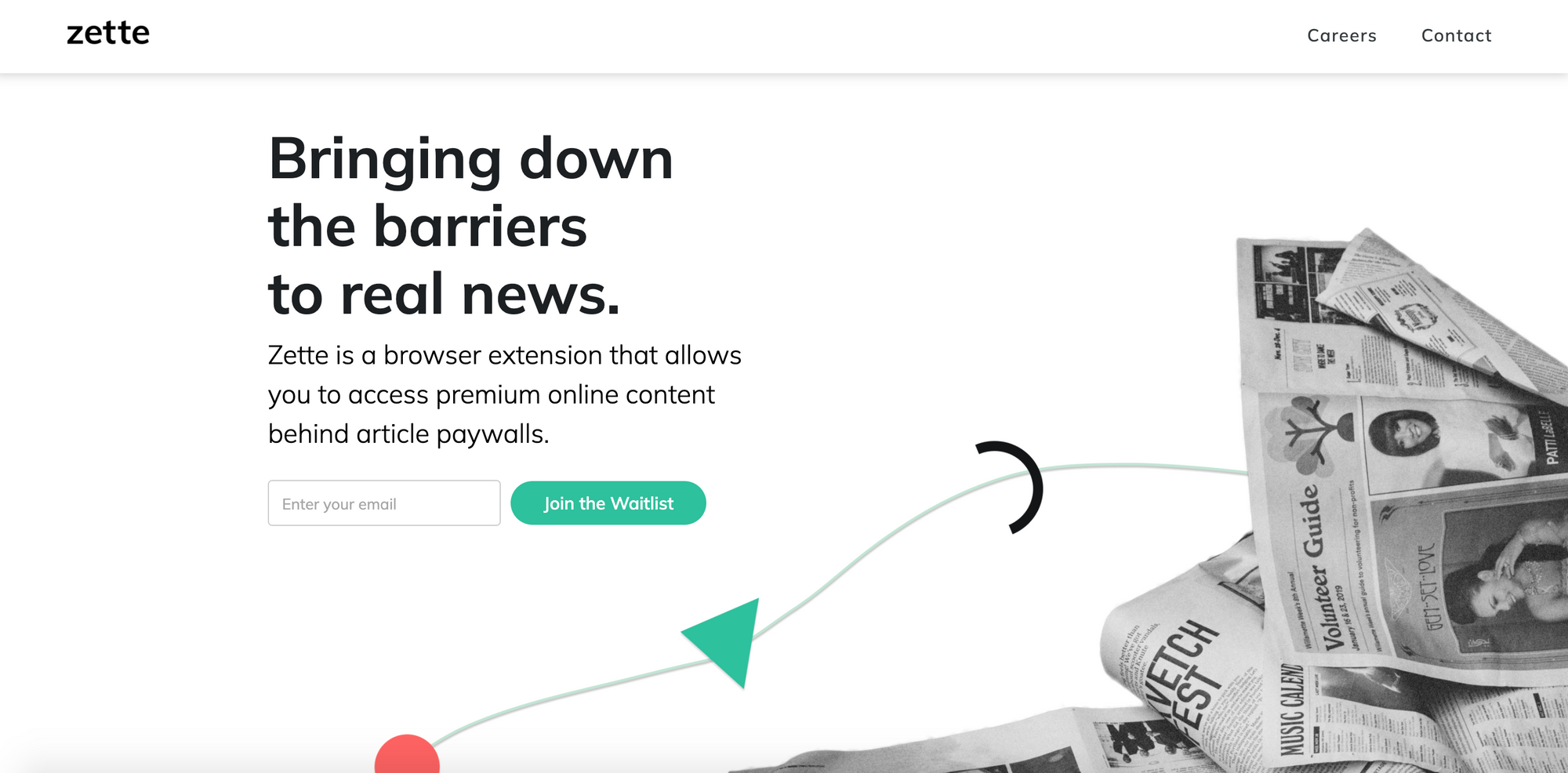As an early-stage founder, you are literally doing all the things and are juggling fifty-leven things at once. However, despite how busy you are, you have to have a clear plan for attracting leads and getting customers. If creating landing pages isn't part of your plan, you're doing it all the wrong.

If you didn't know, having a landing page for your business should be at the top of your marketing strategy - periodt.
If you are reading this and are like, 'wtf is a landing page,' don't worry we got you. Or if you're somewhat familiar with landing pages but need more knowledge, we got you too.
In this post, we're going to break down what a landing page is, why you still need one (or two, or three, or more) if you have a website, tips on creating a landing page that actually converts, and more.
TABLE OF CONTENTS
What's a landing page?
Simply put, a landing page is a page that’s literally designed to convert people in your target market into visitors, and then ultimately into leads (aka paying customers).
Here’s an example of a landing page:
See what I mean. It's simple, to the point, and the main goal to get people to book an appointment is clear as day.
What's the difference between a landing page and my “regular” website?
I know you're probably thinking, I have a website so whyyyyy do I need to create a landing page. I know you are busy AF and don't have time to add unnecessary items to your to-do list, but hear me out tho.
Your landing page and website are not the same.

The whole purpose of your landing page is to convert visitors into future paying customers. Your “regular” website and the other pages on it like the homepage, about us page, etc. don’t count as a landing page because they each exist to do several things among attracting potential customers. On the flip side, your landing page specifically exists to solely attract and convert visitors into customers.
Dassit.
Outside, of that, having a landing page has other benefits like:
1) It’ll teach you more about your target audience
When a person visits your landing page and gives you their email address, you’ll get deeper insights into who they are and what truly interests them. You can get this data by being strategic with the questions you ask, the design and the content of your landing page, and how they respond to your future marketing campaigns now that they’ve given you their email address.
The more you take time out to be strategic with learning and profiling your landing page visitor, the better prepared you’ll be to properly market to them in the future.
2) It’ll help you improve your site’s SEO
Many people rely heavily on social media posts to drive traffic to their site, but don’t sleep on Uncle Google. People are still using Google and other search engines to find information and new products, so every time you publish a landing page, you’re giving your company more opportunities to show up higher in search engines, which will in return drive traffic back to your site.
And then to make things even better, people who discover your landing page through Google or another search engine are more likely to become a lead because they were already looking for what you are offering.
How exactly do landing pages work?
So, it’s actually super simple.
1. After you create your landing page, you will market it using a variety of strategies (You can share it on social media, blast the link in your email list, drop it in some of your Slack or group chats, etc. - just get the word out! Don't be scared to promote your biz and flex on yourself!).
2. Once someone sees the link to your landing page and clicks on it, they’ll be on your landing page.
3. While on your landing page, the viewer will be able to see all of your dope images and content, and then will see opportunities to share their email with you to learn more about what you’re selling or marketing to them.
4. Once they share their email (or whatever other contact information you requested), their info will be stored in your database for you to use for marketing purposes later.
5. From there, you’ll be able to market to the visitor however you like and will watch the dollars roll in once they purchase from you.
Sidenote: When you start sharing your landing page, use unique links so that you can see what messaging enticed the visitor to visit your page. This will be helpful later on when you’re trying to nurture this lead in a more targeted way. Studies show that “nurtured leads” are more likely to become a MQL (marketing qualified lead), and ultimately paying customers faster.

What makes a “good” landing page?
Like with all things, it’s important that you approach your landing page with strategy. Here are a few things that will make your landing page poppin’.
Remove distractions
- People are easily distracted and will stray away from your landing page if it has too much going on. One item on a site that can easily distract someone is the navigation menu at the top of the page. My advice - remove the navigation menu on your landing page so that the viewer’s focus is strictly on your business offering (or limit what's on it; remove the purpose of your landing page is to collect leads; it's not your main website).
Don’t do the most (less is more)
- The longer your landing page is, the more time you’re adding to the viewer’s experience, and the more time you’re giving them to decide if they want to go from being a visitor to a lead. You want the viewer’s experience as seamless as possible. Don’t try to do all the things at once - keep your landing page straightforward and it will more than likely increase your conversion rate.

Give the people a reason to actually want you're offering
- Getting website visitors is hard enough. Once you’ve gotten that person on your landing page, you want them to be so inspired by what you're selling and how you’re marketing it so that they’ll give you their information and will convert to a potential customer. The way that this happens all depends on how you uniquely discuss your offering and why they need it. Also, you know your product or business is great, so don’t be afraid to unapologetically market it. If you have dope photos of your product - show that ish! Already have product or customer testimonials? Talk yo ish!
Include great photos
- You want to know how to get someone’s attention? A bomb photo will do the trick! Not only is the copy/content on our landing page super important, but having high-resolution, relatable photos is equally important too. People are drawn to imagery (hence why IG is still that bish).
Do I have to know how to code to create a landing page?
Nowadays, creating a landing page (or even a website too) can require zero coding skills. There are literally hundreds of landing page builders that allow you to easily drag and drop your content, and that have beautiful design templates because yes, of course, we stan for great design.
And honestly, even if you know how to code, these landing page builders make creating landing pages super simple and quick, so, why do more work if you don’t have to?
Examples of landing page builders to use
Because you got a million things going on right now as an entrepreneur, we’ve done the research for ya and have listed some of the most rated landing page builders that either we've used or founders in our community have used.
Leadpages: This builder is great to use if you have a WordPress site. Leadpages integrates seamlessly with WordPress, and like Landingi, comes with several dope templates to choose from, and it's easily customizable.
Instapage: Instapage is great because their landing page builder is basic - but in a good way. Sometimes less is more, and in this case, Instapage enables you to create your landing page quickly without running into curveballs and feeling all confused and ish.
Mailchimp: This is a great option to use because if you’re already using Mailchimp for your email marketing, you’ll likely be familiar with their software. Also, Mailchimp has simple, yet beautiful templates, and if you have an eCommerce element with your biz, you can sell products straight from their landing page because they have a partnership with Square.
Landingi: Okay so Landingi is truly made for people who don’t wish to spend a lot of time and energy on design. Landingi is a truly “drag and drop” platform with hundreds of beautiful templates. They make it super easy for you to customize your landing page however you like with your own graphics, videos, and text.
Convertkit: Similar to Mailchimp, Convertkit is great because if you’re already using them for your email marketing needs, you’ll be familiar with their software when you try to create a landing page. Also, their template options are organized by its use case, making it super easy to select and customize the perfect landing page for your biz. Lastly, just like LeadPages, Convertkit has a WordPress plugin that makes your landing pages into your site really easy.
Unbounce: From the go, when you use Unbounce, you'll be able to tell that they are really obsessed with landing pages that truly convert visitors into leads. With their A/B testing, Google AdWords integration, and visitor stats, Unbounce will give you tons of data to learn more about your visitors and new leads.
Squarespace: If you already have a Squarespace website, you can create your landing page for free through them. Also, because you’re making your landing page from Squarespace, your page will automatically be on point with your primary website’s branding.
Wix: Wix was specifically built to help people build sites of any magnitude (including landing pages) without coding. Wix also makes converting your landing page to your actual website super easy since both can be hosted all in the same place.
More landing page builder options to consider
*Outside of this list, there are more out there that you can use. Make sure you still do some research on your own and use the one that best works with your budget, skillset, and biz goals.
*feature photo credit: SHVETS production from Pexels

